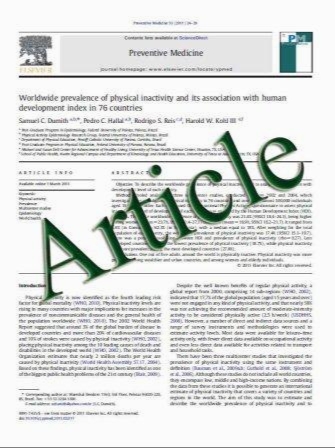Higher liver transaminase levels and oral hypoglycemic drug therapy failure in patients with type 2 diabetes: is iron the missing link?
- نوع فایل : کتاب
- زبان : انگلیسی
- مؤلف : Luca Mascitelli Mark R. Goldstein
- چاپ و سال / کشور: 2011
Description
Dr Irace and colleagues [1] found that higher liver transaminase levels were associated with oral hypoglycemic agent failure in patients with type 2 diabetes. We suggest that this failure may partially be related to the higher body iron stores often found in such patients. Iron is a potent catalyst for oxidative stress, and the amount of free iron available at sites of oxidative or inflammatory injury appears to be a function of the stored iron level. A wealth of evidence has established that iron may play a role in the pathogenesis of type 2 diabetes and other hyperinsulinemic syndromes [2, 3]. Several epidemiological studies have reported a positive association between high body iron stores and the risk of type 2 diabetes [4–6]. Furthermore, induction of near-iron deficiency in carbohydrate- intolerant subjects has been shown to improve insulin sensitivity [7]. An intervention study in patients with type 2 diabetes with elevated ferritin levels provided evidence that bloodletting, which resulted in 50% reduction in serum ferritin concentrations, improved glycemia and insulin sensitivity [8]. On the other hand, hyperferritinemia and increased iron stores have been frequently observed in patients with nonalcoholic fatty liver disease (NAFLD) [9, 10], and it has been suggested that excessive hepatic iron accumulation in NAFLD may be considered as one of the potential cofactors involved in the enhanced oxidative stress, which triggers liver cell necrosis and activation of hepatic stellate cells, both leading to fibrosis [9]. Not surprisingly, iron depletion by phlebotomy was found to be beneficial in improving insulin resistance in patients with NAFLD and hyperferritinemia [11], and reducing transaminase activities in nonalcoholic steatohepatitis [12]. Evidence that iron, NAFLD and, potentially, insulin resistance might be considered biologically intertwined has been confirmed in a recent study [13], which investigating the association between iron intake and serum transaminases and gamma-glutamyltransferase in children and adolescents, found that iron overload contributes to liver injury even in this age group. Therefore, increased iron stores may contribute to both higher transaminase levels and declining beta-cell reserve, and thus be associated with oral hypoglycemic agent failure.
Acta Diabetol DOI 10.1007/s00592-011-0282-0 Received: 3 March 2011 / Accepted: 4 April 2011 Springer-Verlag 2011


